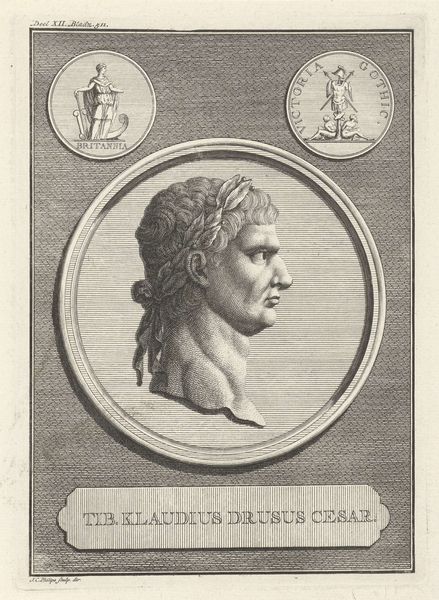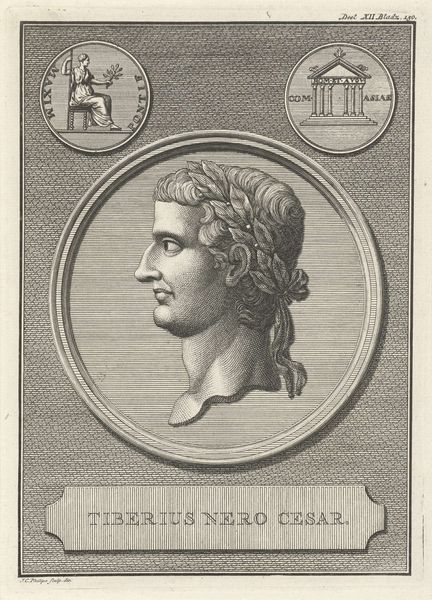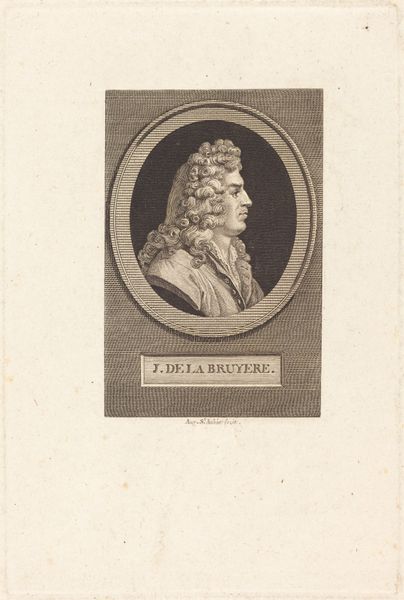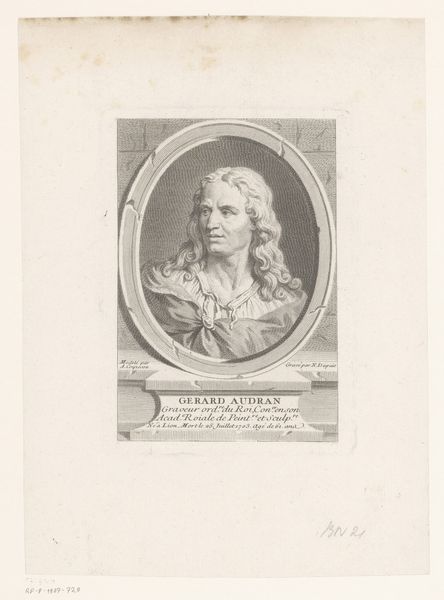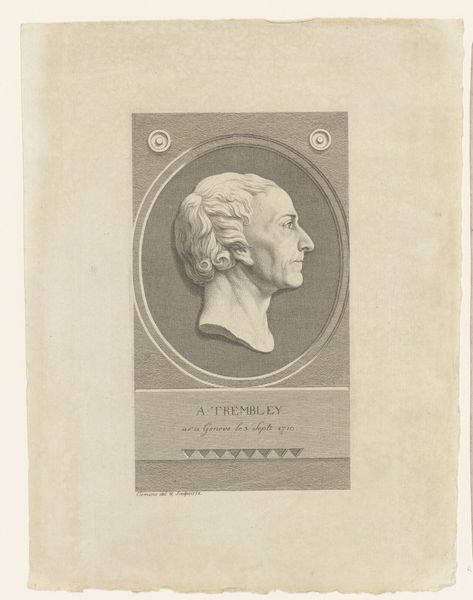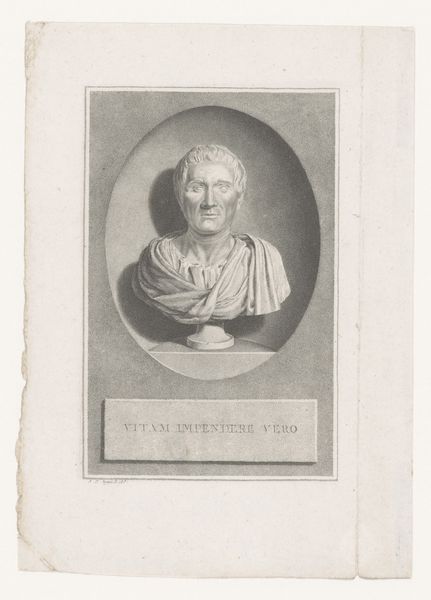
print, engraving
#
portrait
#
baroque
# print
#
old engraving style
#
classical-realism
#
figuration
#
form
#
ancient-mediterranean
#
line
#
engraving
Dimensions: height 270 mm, width 187 mm
Copyright: Rijks Museum: Open Domain
Curator: Standing before us, we have an engraving by Bernard Picart, dating back to 1722. It’s titled "Gesneden steen met de beeltenis van Aesculapius," which translates to "Cut stone with the image of Aesculapius." It's quite a striking portrait. Editor: Aesculapius alright! The intricate line work creates this beautiful sort of antique texture. A thoughtful composition—he looks both pensive and powerful at the same time. Like he knows all the secrets of health but he’s debating whether to share! Curator: The method of production itself is really important here. Printmaking at this time allowed for the wide dissemination of classical imagery and ideals. How accessible it made classical learning and imagery is always fascinating to me. This engraving wouldn't have existed without an industry and patronage system supporting it. Editor: Definitely. I feel like I can almost smell the ink and imagine the artisan's hands meticulously carving the image into the plate, repeating and reproducing and altering, so much process right under our noses here in the museum space. It gives it an earthly feel. The way that knowledge spreads reminds me a bit of spores from fungi, quietly finding its way. The fine detail makes me curious what material did he work with, do we know? Curator: The inscription tells us “Sarda incisum,” meaning it’s based on a sardonyx stone carving from the Brezzrana collection in Rome, suggesting Picart never encountered Aesculapius "in person." So this image isn't originating directly from some high-up genius’s imagination. It’s based on reproducing labor of those carvings. Editor: That context brings such richness, actually shifts how I interpret the lines in the artwork themselves! All that copying makes for this ghostly figure. Knowing all those steps makes this not a portrait so much as the idea of a portrait. Curator: Exactly. And how copies function as artworks with their own agency! Editor: Thanks to that careful material analysis I see so much beyond my first whimsical read. I am actually fond of it, very. Curator: It adds another layer of intrigue. I never looked at it that way before!
Comments
No comments
Be the first to comment and join the conversation on the ultimate creative platform.
